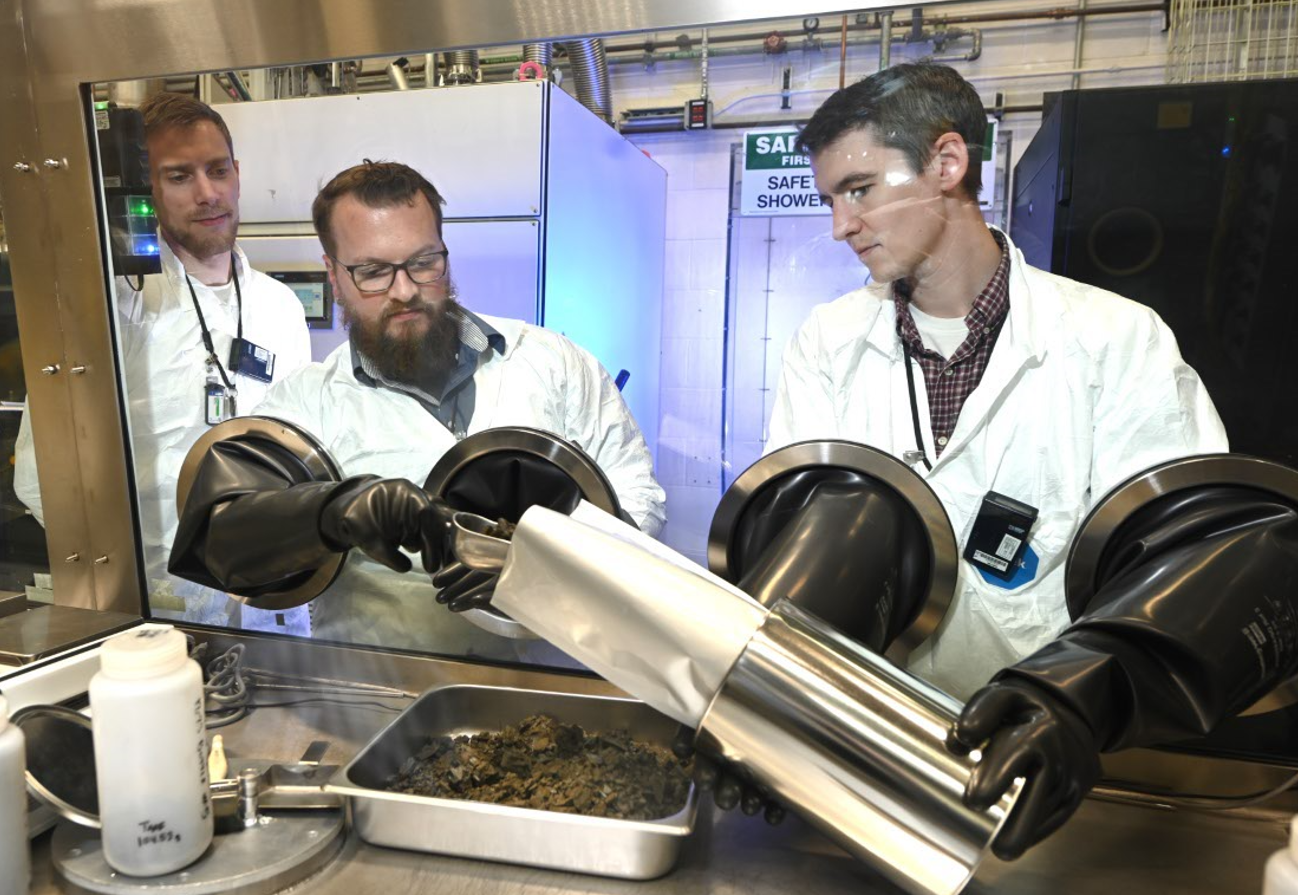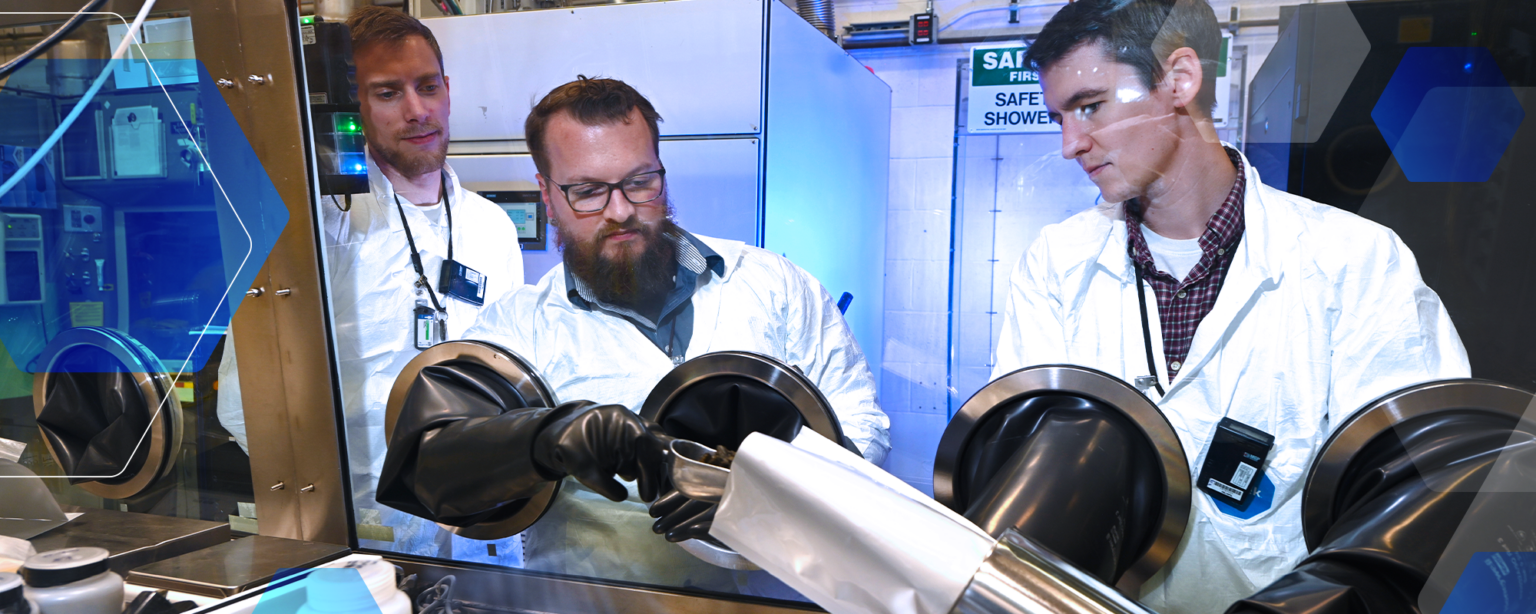Among the impressive nuclear energy scientists at Idaho National Laboratory, Bill Phillips stands out as a particularly gifted molten salt researcher. His journey from intern to staff scientist was marked by unique research findings and growing influence on the scientific community, and clearly illustrates how INL can facilitate a researcher’s development and success.
Phillips’ graduate studies focused on corrosion in molten salt systems for pyroprocessing applications, which use melted salts and electrochemistry to recycle used nuclear fuel. He later earned a doctorate in materials science and engineering from the University of Nevada, Reno.
As a postdoctoral research associate, he studied the unique chemistry and evolution of molten salts as part of the Department of Energy Office of Basic Energy Sciences Energy Frontiers Research Center on Molten Salts in Extreme Environments. This laid the groundwork for his role as INL technical lead for fuel salt synthesis in the Molten Chloride Reactor Experiment (MCRE). This public-private partnership in collaboration with Southern Company, TerraPower, INL and others will be the first operational fast spectrum molten salt reactor experiment to achieve criticality in the world.

From rapid growth to new challenges
After joining INL in 2018, Phillips progressed quickly from a graduate researcher and intern to a research scientist in 2020. His contributions cover a spectrum of molten salt-related research, from examining material behaviors under extreme conditions to studying fundamental molten salt chemistry. Phillips and his colleagues have performed foundational work that influences the establishment of molten salt reactors in the nuclear industry, including the design of the world’s first molten chloride fuel irradiation experiment.
The MCRE project marks a departure from conventional solid fuels, presenting Phillips and his team with the challenge of developing methods for producing the quantity and purity of uranium chloride the experiment requires.
“I’ve always enjoyed finding solutions to complex problems and running interesting experiments,” said Phillips. “The requirements and limitations for the fuel production process provide plenty of opportunity for both.”
In INL’s collaborative environment, Phillips has seamlessly integrated with a community of talented and experienced professionals.
“Bill has a rare mix of passion for success, technical knowledge and drive for innovation, with a fun and energetic personality that makes him a joy to work with,” said Phillips’ co-worker and INL research scientist Toni Karlsson. “He inspires and motivates those around him with his optimistic outlook and the incredible amount of progress he has made developing fuel salt synthesis technologies, corrosion and molten salt chemistry.”
International recognition
Beyond his work at INL, Phillips’ influence extends globally, with engagements as an invited speaker at molten salt reactor workshops and as session chair at the International Congress on Advances in Nuclear Power Plants. These roles underscore both his growing impact on the scientific community and the recognition of INL as a hub for cutting-edge research.
“INL has world-class facilities for molten salt and nuclear energy research, which makes my work possible,” said Phillips. “Being able to work directly with uranium to study its chemistry in the context of molten salts, while having access to the facilities at the Materials Fuels Complex is a very unique opportunity.”

Phillips’ background at INL also influences his work in the Material Recovery and Waste Form Development campaign. This program focuses on improving and maintaining a sustainable nuclear fuel cycle, from production through recycling. Phillips manages several research and development projects related to technologies at the back end of the nuclear fuel cycle, after fuel has been used to power a reactor. This work helps the program minimize waste and maximize reuse and recycling potential. These improvements will impact renewable energy decisions worldwide.
Encouraging the next generation
Phillips knows that his success is the result of guidance from his mentors. “I’ve been able to work with and learn from a lot of people with invaluable experience and expertise,” said Phillips. “In turn, I’ve found that my own mentorship opportunities have been really enjoyable and fulfilling.”
Jacob Yingling, one of Phillips’ postdoctoral mentees, has been a key contributor to the development of the uranium chloride synthesis process for MCRE since he joined INL in 2022.
“Bill is mission-driven — when you work with him, you can tell that he’s intrinsically motivated to achieve the laboratory’s safe and sustainable nuclear energy goals,” said Yingling. “He has a strong combination of technical capability and personability that allow him to make a large impact on the breadth of challenging projects he’s involved in, and on those he leads.”
Phillips sums it up best when asked what advice he would give to up and coming researchers considering a career at the lab.
“INL is an exciting place to work, particularly now,” he said. “When advanced reactors come to full fruition, it will be because of the hard work and dedication of the people that work here.”





